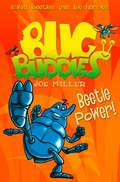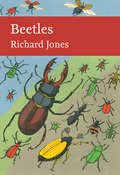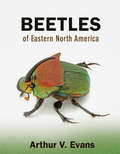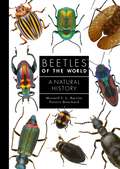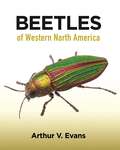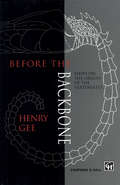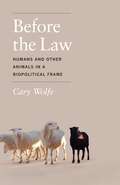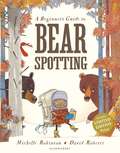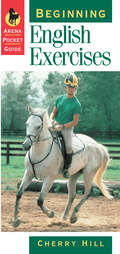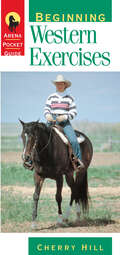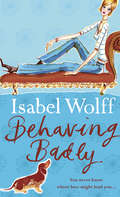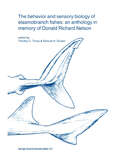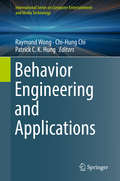- Table View
- List View
Beetle (Large Print)
by RnibThis is a picture of a beetle viewed from above and facing the top of the page. There is a locator dot shown, which will be at the top left of the page when the image is the right way up. Just down the page, there is a silhouette of the beetle at approximately real size. In the centre of the page is the beetle's head with its mouth parts (palps) and two eyes. Its two front legs are to either side of the head. Further down, two more legs can be found on each side of the abdomen. Although this cannot be seen on this image, all of the beetle's six legs connect to the thorax, underneath its body. Its abdomen has a pattern of grooves running down it.
Beetle Power! (Bug Buddies #5)
by Joe MillerEven bugs can be heroes! Join the Bug Buddies on bug-tastic adventures, as they pit their wits against the dreaded spider Spinner, creepiest of all creepy crawlies…
Beetle (UEB Contracted)
by RnibThis is a picture of a beetle viewed from above and facing the top of the page. There is a locator dot shown, which will be at the top left of the page when the image is the right way up. Just down the page, there is a silhouette of the beetle at approximately real size. In the centre of the page is the beetle's head with its mouth parts (palps) and two eyes. Its two front legs are to either side of the head. Further down, two more legs can be found on each side of the abdomen. Although this cannot be seen on this image, all of the beetle's six legs connect to the thorax, underneath its body. Its abdomen has a pattern of grooves running down it.
Beetle (UEB Uncontracted)
by RnibThis is a picture of a beetle viewed from above and facing the top of the page. There is a locator dot shown, which will be at the top left of the page when the image is the right way up. Just down the page, there is a silhouette of the beetle at approximately real size. In the centre of the page is the beetle's head with its mouth parts (palps) and two eyes. Its two front legs are to either side of the head. Further down, two more legs can be found on each side of the abdomen. Although this cannot be seen on this image, all of the beetle's six legs connect to the thorax, underneath its body. Its abdomen has a pattern of grooves running down it.
Beetles (Collins New Naturalist Library #136)
by Richard Jones‘A truly excellent account’ British Wildlife Beetles are arguably the most diverse organisms in the world, with nearly half a million beetle species described and catalogued in our museums, more than any other type of living thing.
Beetles of Eastern North America (PDF)
by Arthur V. EvansBeetles of Eastern North America is a landmark book--the most comprehensive full-color guide to the remarkably diverse and beautiful beetles of the United States and Canada east of the Mississippi River. It is the first color-illustrated guide to cover 1,406 species in all 115 families that occur in the region--and the first new in-depth guide to the region in more than forty years. Lavishly illustrated with over 1,500 stunning color images by some of the best insect photographers in North America, the book features an engaging and authoritative text by noted beetle expert Arthur Evans.Extensive introductory sections provide essential information on beetle anatomy, reproduction, development, natural history, behavior, and conservation. Also included are tips on where and when to find beetles; how to photograph, collect, and rear beetles; and how to contribute to research. Each family and species account presents concise and easy-to-understand information on identification, natural history, collecting, and geographic range. Organized by family, the book also includes an illustrated key to the most common beetle families, with 31 drawings that aid identification, and features current information on distribution, biology, and taxonomy not found in other guides.An unmatched guide to the rich variety of eastern North American beetles, this is an essential book for amateur naturalists, nature photographers, insect enthusiasts, students, and professional entomologists and other biologists.Provides the only comprehensive, authoritative, and accessible full-color treatment of the region's beetlesCovers 1,406 species in all 115 families east of the Mississippi RiverFeatures more than 1,500 stunning color images from top photographersPresents concise information on identification, natural history, collecting, and geographic range for each species and familyIncludes an illustrated key to the most common beetle families
Beetles of the World: A Natural History (A Guide to Every Family #7)
by Maxwell V. Barclay Patrice BouchardA richly illustrated guide to the astonishing variety of beetles around the worldBeetles make up about a quarter of known animal species and are arguably the most diverse group of organisms on Earth: almost 400,000 species have been formally described so far, and it is likely that this number merely scratches the surface. In Beetles of the World, Maxwell Barclay and Patrice Bouchard—two of the world’s foremost beetle experts—celebrate these remarkable creatures in all their variety, from their size and appearance to their ecological importance.Providing concise accounts of all the major families and subfamilies of Coleoptera, Beetles of the World explores beetle anatomy, life cycle, fossil history, feeding habits, role in the food web, habitats, relationship with humans, and classification—as well as the essential part that beetles play in the global ecosystem, and the ways humans can help protect them.Features 300 stunning color photographsPresents family profiles with a distribution map, table of information, and commentaryIncludes a comprehensive introduction that provides insight into the astonishing diversity of beetles and their histories
Beetles of the World: A Natural History (A Guide to Every Family #7)
by Maxwell V. Barclay Patrice BouchardA richly illustrated guide to the astonishing variety of beetles around the worldBeetles make up about a quarter of known animal species and are arguably the most diverse group of organisms on Earth: almost 400,000 species have been formally described so far, and it is likely that this number merely scratches the surface. In Beetles of the World, Maxwell Barclay and Patrice Bouchard—two of the world’s foremost beetle experts—celebrate these remarkable creatures in all their variety, from their size and appearance to their ecological importance.Providing concise accounts of all the major families and subfamilies of Coleoptera, Beetles of the World explores beetle anatomy, life cycle, fossil history, feeding habits, role in the food web, habitats, relationship with humans, and classification—as well as the essential part that beetles play in the global ecosystem, and the ways humans can help protect them.Features 300 stunning color photographsPresents family profiles with a distribution map, table of information, and commentaryIncludes a comprehensive introduction that provides insight into the astonishing diversity of beetles and their histories
Beetles of Western North America
by Arthur V. EvansFrom the author of the acclaimed Beetles of Eastern North America, a triumphant follow-up guide to western beetles, lavishly illustrated with more than 1,500 stunning color photographsBeetles of Western North America is a landmark book—the only comprehensive color photographic guide to the remarkably diverse and beautiful beetles of the United States and Canada west of the Continental Divide. A triumphant follow-up to Arthur Evans’s highly regarded Beetles of Eastern North America, this engaging and accessible book covers 1,428 species from all 131 families that occur in the West. The book is lavishly illustrated with more than 1,500 stunning images by some of the best insect photographers in North America.An extensive introduction provides essential information on beetle anatomy, natural history, behavior, and conservation, as well as tips on where and when to find beetles; how to photograph, collect, and rear them; and how to contribute to research. Beetles of Western North America is organized by family, and each family and species account presents concise and easy-to-understand information on identification, natural history, collecting, and geographic range. The book includes current information on distribution, biology, and taxonomy not found in other guides, and features an illustrated identification key to the most common beetle families.An unmatched guide to the rich variety of western North American beetle fauna, this is a must-have book for amateur naturalists, nature photographers, insect enthusiasts, students, professional entomologists, and other biologists.The only comprehensive color photographic guide to the region’s beetlesCovers 1,428 species from all 131 families west of the Continental Divide, and offers tips for identifying more than 450 additional speciesFeatures more than 1,500 stunning color photographsPresents concise information on identification, natural history, collecting, and geographic range for each species and familyIncludes an illustrated identification key to the most common beetle families
Before the Backbone: Views on the origin of the vertebrates
by H. GeeWe cannot catechise our stony ichthyolites, as did the necromantic lady of the Arabian Nights did the coloured fishes of the lake which had once been a city, when she touched their dead bodies with her wand, and they straightaway raised their heads and rephed to her queries. We would have many a question to ask them if we could - questions never to be solved. Hugh Miller, The Old Red Sandstone When I started this book in 1991, the subject of vertebrate origins was fusty and unfashionable. Early drafts for this preface read like an extend ed complaint at the lot of traditional morphologists, cast aside by the march of modern molecular biology. But no longer - this book should reach you at a time of renewed inter est in the origin of the vertebrates, our own particular corner of creation. For although the topic has excited interest for well over a century, molec ular biology has only lately achieved the maturity necessary to test its predictions. As a legitimate field of study, it is fashionable again.
Before the Law: Humans and Other Animals in a Biopolitical Frame
by Cary WolfeAnimal studies and biopolitics are two of the most dynamic areas of interdisciplinary scholarship, but until now, they have had little to say to each other. Bringing these two emergent areas of thought into direct conversation in Before the Law, Cary Wolfe fosters a new discussion about the status of nonhuman animals and the shared plight of humans and animals under biopolitics. Wolfe argues that the human-animal distinction must be supplemented with the central distinction of biopolitics: the difference between those animals that are members of a community and those that are deemed killable but not murderable. From this understanding, we can begin to make sense of the fact that this distinction prevails within both the human and animal domains and address such difficult issues as why we afford some animals unprecedented levels of care and recognition while subjecting others to unparalleled forms of brutality and exploitation. Engaging with many major figures in biopolitical thought—from Heidegger, Arendt, and Foucault to Agamben, Esposito, and Derrida—Wolfe explores how biopolitics can help us understand both the ethical and political dimensions of the current questions surrounding the rights of animals.
Before the Law: Humans and Other Animals in a Biopolitical Frame
by Cary WolfeAnimal studies and biopolitics are two of the most dynamic areas of interdisciplinary scholarship, but until now, they have had little to say to each other. Bringing these two emergent areas of thought into direct conversation in Before the Law, Cary Wolfe fosters a new discussion about the status of nonhuman animals and the shared plight of humans and animals under biopolitics. Wolfe argues that the human-animal distinction must be supplemented with the central distinction of biopolitics: the difference between those animals that are members of a community and those that are deemed killable but not murderable. From this understanding, we can begin to make sense of the fact that this distinction prevails within both the human and animal domains and address such difficult issues as why we afford some animals unprecedented levels of care and recognition while subjecting others to unparalleled forms of brutality and exploitation. Engaging with many major figures in biopolitical thought—from Heidegger, Arendt, and Foucault to Agamben, Esposito, and Derrida—Wolfe explores how biopolitics can help us understand both the ethical and political dimensions of the current questions surrounding the rights of animals.
Before the Law: Humans and Other Animals in a Biopolitical Frame
by Cary WolfeAnimal studies and biopolitics are two of the most dynamic areas of interdisciplinary scholarship, but until now, they have had little to say to each other. Bringing these two emergent areas of thought into direct conversation in Before the Law, Cary Wolfe fosters a new discussion about the status of nonhuman animals and the shared plight of humans and animals under biopolitics. Wolfe argues that the human-animal distinction must be supplemented with the central distinction of biopolitics: the difference between those animals that are members of a community and those that are deemed killable but not murderable. From this understanding, we can begin to make sense of the fact that this distinction prevails within both the human and animal domains and address such difficult issues as why we afford some animals unprecedented levels of care and recognition while subjecting others to unparalleled forms of brutality and exploitation. Engaging with many major figures in biopolitical thought—from Heidegger, Arendt, and Foucault to Agamben, Esposito, and Derrida—Wolfe explores how biopolitics can help us understand both the ethical and political dimensions of the current questions surrounding the rights of animals.
Before the Law: Humans and Other Animals in a Biopolitical Frame
by Cary WolfeAnimal studies and biopolitics are two of the most dynamic areas of interdisciplinary scholarship, but until now, they have had little to say to each other. Bringing these two emergent areas of thought into direct conversation in Before the Law, Cary Wolfe fosters a new discussion about the status of nonhuman animals and the shared plight of humans and animals under biopolitics. Wolfe argues that the human-animal distinction must be supplemented with the central distinction of biopolitics: the difference between those animals that are members of a community and those that are deemed killable but not murderable. From this understanding, we can begin to make sense of the fact that this distinction prevails within both the human and animal domains and address such difficult issues as why we afford some animals unprecedented levels of care and recognition while subjecting others to unparalleled forms of brutality and exploitation. Engaging with many major figures in biopolitical thought—from Heidegger, Arendt, and Foucault to Agamben, Esposito, and Derrida—Wolfe explores how biopolitics can help us understand both the ethical and political dimensions of the current questions surrounding the rights of animals.
Before the Law: Humans and Other Animals in a Biopolitical Frame
by Cary WolfeAnimal studies and biopolitics are two of the most dynamic areas of interdisciplinary scholarship, but until now, they have had little to say to each other. Bringing these two emergent areas of thought into direct conversation in Before the Law, Cary Wolfe fosters a new discussion about the status of nonhuman animals and the shared plight of humans and animals under biopolitics. Wolfe argues that the human-animal distinction must be supplemented with the central distinction of biopolitics: the difference between those animals that are members of a community and those that are deemed killable but not murderable. From this understanding, we can begin to make sense of the fact that this distinction prevails within both the human and animal domains and address such difficult issues as why we afford some animals unprecedented levels of care and recognition while subjecting others to unparalleled forms of brutality and exploitation. Engaging with many major figures in biopolitical thought—from Heidegger, Arendt, and Foucault to Agamben, Esposito, and Derrida—Wolfe explores how biopolitics can help us understand both the ethical and political dimensions of the current questions surrounding the rights of animals.
Before the Law: Humans and Other Animals in a Biopolitical Frame
by Cary WolfeAnimal studies and biopolitics are two of the most dynamic areas of interdisciplinary scholarship, but until now, they have had little to say to each other. Bringing these two emergent areas of thought into direct conversation in Before the Law, Cary Wolfe fosters a new discussion about the status of nonhuman animals and the shared plight of humans and animals under biopolitics. Wolfe argues that the human-animal distinction must be supplemented with the central distinction of biopolitics: the difference between those animals that are members of a community and those that are deemed killable but not murderable. From this understanding, we can begin to make sense of the fact that this distinction prevails within both the human and animal domains and address such difficult issues as why we afford some animals unprecedented levels of care and recognition while subjecting others to unparalleled forms of brutality and exploitation. Engaging with many major figures in biopolitical thought—from Heidegger, Arendt, and Foucault to Agamben, Esposito, and Derrida—Wolfe explores how biopolitics can help us understand both the ethical and political dimensions of the current questions surrounding the rights of animals.
Beg: A Radical New Way of Regarding Animals
by Rory FreedmanRory Freedman, co-author of the #1 New York Times mega-seller Skinny Bitch, returns with a call-to-arms to all animal lovers. So many of us call ourselves animal lovers and worship our dogs and cats-but we could be using that love as a force for helping all animals. Beg is a battle cry on their behalf, as well as an inspirational, empowering guide to what we can do to help them. With the same no-nonsense tone that made Skinny Bitch a multi-million copy success, Beg galvanizes us to change our choices and actions, and to love animals in a radical new way.
Beg: A Radical New Way of Regarding Animals
by Rory FreedmanRory Freedman, co-author of the #1 New York Times mega-seller Skinny Bitch, returns with a call-to-arms to all animal lovers. So many of us call ourselves animal lovers and worship our dogs and cats -- but we could be using that love as a force for helping all animals. Beg is a battle cry on their behalf, as well as an inspirational, empowering guide to what we can do to help them. With the same no-nonsense tone that made Skinny Bitch a multi-million copy success, Beg galvanizes us to change our choices and actions, and to love animals in a radical new way.
A Beginner's Guide to Bearspotting
by Michelle Robinson David RobertsBearspotting is a dangerous business – you ought to take it seriously, you know. So here's what you need to know for starters – black bears are dangerous and black, brown bears are dangerous and brown. Although sometimes black bears can be a little brown, and brown bears can be a little black. Are you following? You really need to focus here. If you do, this guide will tell you all you need to know when walking in BEAR COUNTRY. Don't leave home without it. Are you ready? Good! Let's go ... A Beginner's Guide to Bearspotting is the laugh-out-loud, essential guide for all would-be bearspotters. To be studied with due care and attention. Don't say we didn't warn you ...This eBook comes with a gloriously entertaining audio accompaniment, read by the award-winning actor Lenny Henry.
Beginning English Exercises
by Cherry HillDevelop your English riding technique and bond with your horse as you work your way through this collection of fun and rewarding exercises. Veteran trainer Cherry Hill shows you everything you need to know to master the subtle nuances of balance, transitions, and establishing energetic forward movement. Designed for easy in-the-saddle reference, this compact guide provides clear instructions and arena maps that include detailed patterns for every exercise. Take your horsemanship to a new level!
Beginning Western Exercises
by Cherry HillWith this pocket-sized guide in hand, you'll find it easy to develop your Western riding skills. Cherry Hill's exercises will help you achieve rider balance, find a steady rhythm, establish energetic forward movement, maintain left to right balance, learn the gaits, learn transitions, and begin bending work.
Behaving Badly
by Isabel WolffThe fifth novel from the hugely entertaining writer of RESCUING ROSE. Stylishly written, sophisticated but warmhearted and accessible, this is Isabel Wolff at her inimitable best.
The behavior and sensory biology of elasmobranch fishes: an anthology in memory of Donald Richard Nelson (Developments in Environmental Biology of Fishes #20)
by Samuel H. Gruber Timothy C. TricasThe elasmobranch fishes include the living sharks, skates and rays that are important members of nearly all marine ecosystems. Their large size, secretive behavior, and wide-ranging habits make them difficult to observe in the field or to maintain in captivity. Consequently, little is known about their natural behavior and how it is mediated by their sensory systems. This volume is dedicated to the scientific contributions and memory of Donald Nelson, a pioneer in the study of shark behavior, sensory biology, and remote instrumentation. The two opening papers review Don Nelson's unique scientific accomplishments and provide insight into his strong bias towards study of animals in the field. These are followed by 14 scientific papers on elasmobranch behavior, sensory biology, and current monitoring technologies. The papers on elasmobranch sensory biology and behavior address questions on hearing, the lateral line, electroreception, the brain, orientation behavior, chemical irritants, feeding, and reproduction. The latter section of the volume presents papers on conventional tagging techniques, ultrasonic telemetry, physiological telemetry, remote monitoring techniques, archival tagging and satellite tagging. The intent of this volume is to familiarize both new and established scientists with the sensory biology and behavior of sharks and rays, and to encourage further behavioral research on these animals in their natural environment.
Behavior Engineering and Applications (International Series on Computer Entertainment and Media Technology)
by Raymond Wong Chi-Hung Chi Patrick C. HungMany industrial applications built today are increasingly using emerging behavior engineering technologies: this book looks at various research and practical issues for researchers and students working in computer science and engineering, and for industry technology providers interested in behavior engineering and applications. Behavior Engineering and Applications encompasses intelligent and efficient computational solutions, including models, architectures, algorithms and specific applications, focused on processing, discovering, understanding and analyzing the behavior captured by the above data. Focusing on applying any engineering paradigm to systemically process, discover, understand and analyze these data, this book also addresses problems in a variety of areas and applications that related to behavior engineering.This book includes chapters derived from selected papers from The 2016 International Conference on Behavior Engineering (ICBE), as well as separate contributions the editors selected cutting-edge research related to behavior engineering.

